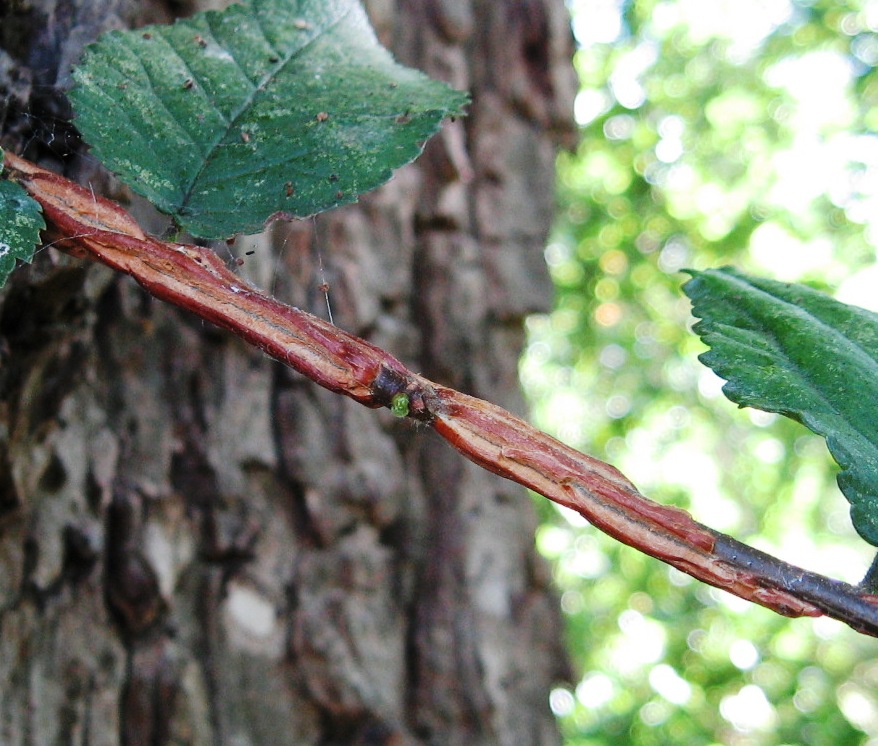
Stem cankers and dieback
Botryosphaeria dothidea
What are Stem cankers and dieback (Botryosphaeria dothidea)?
Botryosphaeria dothidea is a fungal pathogen that causes Stem cankers and dieback. This fungus is commonly known as the Botryosphaeria canker or Botryosphaeria dieback. It is widely distributed and affects a broad range of woody plants. Commonly affected plants include fruit trees, grapevines, ornamental trees, and shrubs. Symptoms include yellowing foliage and thinning of the canopy, followed by the appearance of brown cankers with gray centers on branches. Dead branches and black, spore-producing structures can be observed as the disease progresses. B. dothidea can stain the wood of infected plants dark. It is an opportunistic pathogen that infects stressed plants.
How do Stem cankers and dieback (Botryosphaeria dothidea) occur?
B. dothidea reproduces through sexual and asexual methods. Sexual reproduction produces ascospores that are dispersed in the air and infect susceptible plants through wounds. Asexual reproduction occurs through pycnidiospores, which are released during spring or early summer and spread by rain splash. The spores can remain viable in cankers and plant debris, ensuring long-term survival. This reproductive strategy allows for the continuous cycle of infection and disease development in various host plants.
Symptoms
1 - Impact on plants
• Botryosphaeria dothidea can have several effects on plants, soil, and the environment. It causes Botryosphaeria canker disease, leading to branch dieback, canopy thinning, and even death of affected plants. • This can result in disfigurement, loss of fruit production, and reduced plant vitality.
2 - Impact on Environment
The accumulation of deadwood from infected plants can impact the soil and contribute to increased fire risk.
Solutions
1 - Cultural Practices
• Provide proper cultural care to keep plants vigorous, including appropriate watering, fertilization, and soil management. • Avoid unnecessary wounding of plant tissues and protect plants from extreme environmental conditions. • Regularly inspect plants for diseased or dead tissue and promptly prune it off, making clean cuts at an angle in healthy tissue just above a node. • Water plants at the base to keep foliage dry and minimize the spread of fungal spores through water splashing. • Select plant varieties that are less susceptible to Botryosphaeria dothidea infection.
2 - Sanitation and Pruning
• Sanitize pruning tools between cuts and between plants to prevent the transmission of the pathogen. • Disinfect pruning tools with a solution of 70% isopropyl alcohol or a household bleach solution. • Remove and dispose of dead or dying branches, pruning a few inches below the canker on infected branches. • Inspect pruning cuts for discoloration from fungal infection and disinfect tools if needed.
3 - Fungicide Treatment (as a last resort)
• In severe cases, fungicides containing phosphorous acid (such as Agri-Fos) can be applied. Fungicides may protect foliage and fruit and prevent new canker formation. • Consult with a local horticulturist or plant pathologist for guidance on appropriate fungicide use.
